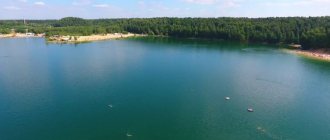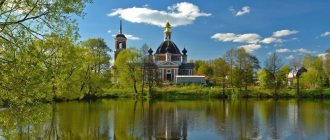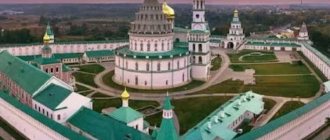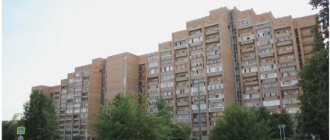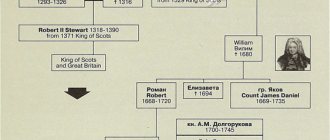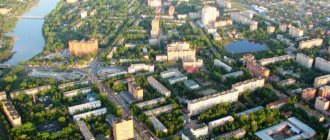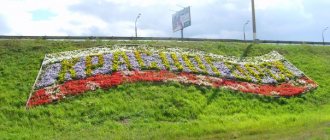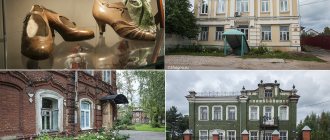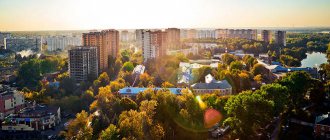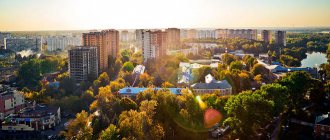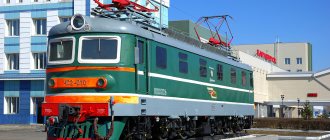Elektrougli is a city in the Noginsk district, Moscow region with a population of over 21 thousand people. Located 20 kilometers east of Moscow in the direction of the Moscow-Nizhny Novgorod railway.
Since 2006, the city of Elektrougli has been part of an urban settlement of the same name, which also includes the villages of Vishnyakovo, Kroliki, and the village of the 2nd Biserovsky site. You can get to the urban settlement of Elektrougli by rail from the Kursky station or by car along the Gorkovskoye or Nosovikhinskoye highway. Minibus taxis run constantly from the Elektrougli railway station to the Novogireevo metro station. Elektrougli is located very close to Moscow - about 30 minutes drive and you are already in the capital.
History of the city of Elektrougli
Elektrougly was given city status in 1956 when the villages of Isakovo, Maryino, Bulgakovo, Safonovo, the villages of Kamenka, Maloe Vasilyevo and Bolshoye Vasilyevo, and the village of Gorki were united. The city received its industrial name as an “inheritance” from a plant that produced a wide range of electric coal products that supplied the space, aviation, automotive, energy, and mining industries. During the war, it was the only plant producing electric brushes for military equipment. Once upon a time, the Elektrougli plant was a huge city-forming enterprise, which employed the bulk of the city’s adult population.
Mentions of settlements that became part of the city are associated with famous noble families - princes Volkonsky and Naryshkin, Brunov and Karneev, Elagin, Lopukhin and Obukhov. How many estates there were on the site of the modern city and the most beautiful linden alleys! Several dozen centuries-old linden trees still delight city residents with their lush blossoms and intoxicating aroma. Almost the entire population of the city walks here every summer during the linden blossoms, be it mothers with strollers, couples in love or entire families.
The city has preserved two unique wooden buildings, which were once the estate of eminent princes, later acquired by the merchant of the 2nd guild Brunov, and a wooden outbuilding. Today they are located in the very heart of Kudinovsky College.
On the territory of the city of Elektrougli, 2 artificial reservoirs out of 4 have survived. These are Isakovsky and Kamensky ponds. It is believed that Kamensky Pond received its name due to the abundance of large boulders and small stones, which local residents found in abundance in the surrounding fields. The rockiness of the soil is due to the glacier that once passed here, which left such a “stony” memory for its descendants since the Ice Age.
Kamensky Pond is a beautiful body of water with picturesque shores, and a small sandy beach with a gentle bottom on the city side is very popular with local residents in the summer. There is a children's playground for the youngest holidaymakers with swings, sandboxes and all kinds of ladders.
Old people say that once in these places there was an estate of Malyuta Skuratov, who visited here and hunted in the local forests. It is also assumed that there is an underground passage that leads exactly under the Kamensky Pond itself, and that somewhere in this area the long-lost library of Ivan the Terrible is hidden. All these, of course, are legends, but without legends, perhaps, there is not a single city or village in the world.
LiveInternetLiveInternet
CERAMIC INDUSTRY
Since the 18th century, hand weaving has been widely developed here. The landowners Okulovs, Korolkovs, merchants Sorokins and Brunovs especially contributed to this. In their handicraft factories, in small huts and at home, peasants produced cloth, canvas, calico, silk, burlap, calico, oilcloth, carpets and much more. Work was obtained in the distribution office at weaving establishments. After 1917, the weaving industry in Kamenka was stopped and liquidated. Thanks to the rich Kudinovskoe clay deposit, a brick trade arose in this area from the end of the 18th century, one of the founders of which were the ministers of the Church of the Intercession of the Holy Virgin in the neighboring village of Kudinov. On church lands rich in clay, near the village of Belaya, the Zhokhov brothers built the first “pottery-brick establishment”, mechanized by steam engines, in 1875. They built the second plant in 1898 near the Kudinovo railway station. These factories were quite well equipped: roller runners were used for better kneading and mixing of clay, steam presses were used for molding products, and ring furnaces of the Hoffmann system were used for firing. The Moscow entrepreneurs Karneevs, Stepanovs, and the Hovhannesyants brothers who lived in the local district also had similar “establishments.” A large number of “brick establishments” (clay sheds) using manual labor were opened by Kudinovsky peasant entrepreneurs Mazovs, Treshchalins, Kharitonovs, Safronovs and others. During the First World War and the Civil War, brick production was suspended and resumed only in the 1920s with the beginning of the New Economic Policy. In the 1930s, on the basis of the Zhokhov plant near the Kudinovo railway station, a new ceramic plant was built for the continuous production of facing bricks and blocks. The extraction of raw materials was carried out by open-pit mining in a clay quarry located several kilometers away, to which a narrow-gauge railway line was laid from the plant. On the basis of the brick factories of the Zhokhov brothers and an artel of artisans, the “Coopsilicate” artel was created in the early 1920s. Then this enterprise successively became, then refractory, the Kudinovsky ceramic block plant (KZK) and, finally, the largest complex for the production of brick and ceramic products - the Kudinovsky Ceramics Plant (KKKI). During the Great Patriotic War, this plant played a special and important role in winning the great Victory over fascism, organizing in the shortest possible time the production of refractory products, which were extremely necessary for metallurgical), Elektrostal and Chelyabinsk, which worked exclusively for military needs. Many plant workers were awarded high government awards. Not far from the railway station, the Kudinovsky Ceramic Block Plant was built in 1951. In addition to bricks, sewer pipes, facing and glazed tiles were made here. On August 2, 1955, the Kudinovsky Industrial Evening College was established at the plant. Later, its branches were opened in Kuchino, Bunkovo and Zheleznodorozhny. On October 1, 1957, the brick factories were united under the general name Kudinovsky, and in 1973 it received a new name - “Kudinovsky Ceramic Products Plant”. Residential buildings, industrial buildings and buildings appeared all over the country, lined with bricks from the Kudinovsky plant - so famous were its products. Many people remember the tiles produced at the plant with the funny name “hog”. The fact is that initially “hog” was used to call exclusively façade tiles that imitate brick. During its manufacturing process, two technological holes were made in the tile. These holes were very reminiscent of a pig's snout, which is why this tile got its name. After baking, the blank was divided into two equal parts, resulting in two tiles with a relief back surface.
Elektrougli. A city near Moscow with its own history
In the series of small towns of Russia we will go to Elektrougli. This city is located just a few tens of kilometers from Moscow. There is a house there with two addresses and, according to legend, there was once a library of Ivan the Terrible.
After the noisy bustle of Moscow, Elektrougli is unusually calm. Pedestrians walk, not run, along the streets. There are few cars, but many bicycles. Once you turn off the main street, you can listen to the ringing autumn silence.
In the very center of the city there is Kamensky Pond. It was dug by serfs. Once upon a time, the reservoir and the park around it were part of a noble estate, but now there are dachas on the banks.
An inconspicuous four-story building, lost among modern cottages, is all that remains of the rich estate of the Volkonsky princes.
The house is more than 200 years old, but now it’s hard to guess from its appearance that nobles once lived here.
In the last century, the building was rebuilt and a mechanical engineering college was opened in it. In the century, the current technical school was called a college and modern specialties were added: tourism and programming. But the most popular area of training for many years has been car repair.
Yuri Nikolaevich not only studied here, but also lived here. His father was a teacher, and the family lived in the outbuilding. There have always been legends about the former estate. They said that before the princes, boyars lived here, and in this very place was the estate of Malyuta Skuratov. And when the technical school was rebuilt, they actually dug out an underground passage.
Yuri Nikolaevich Govorkov, resident of Elektrougli: “You know, there were a lot of legends, and when this hole was formed, everyone started saying that it was possible that this was the library of Ivan the Terrible. According to legend, large convoys came here and left empty.”
But they never started looking for the library, and the underground passage was filled up. Yuri Nikolaevich also worked in a historical place, although in a different place. He was the chief engineer of a ceramic products plant. More than 100 years ago, beautiful cream-colored bricks began to be produced here. In the capital, houses were built from it, and Stalinist high-rise buildings were lined with ceramics.
Yuri Govorkov, resident of Elektrougli: “And clay reserves, according to recent geological studies, were quite high.”
But in the 90s the plant passed into private hands. Land and workshops began to be rented out, production volumes fell, and several years ago the enterprise closed. Some buildings have been demolished, the rest are crumbling. The plant also went down in history.
But in another part of Elektrougli a new plant was opened. True, it does not produce bricks, but almost 900 types of cable. Each core is made of non-ferrous metal – copper or aluminum. There are armored cables - they cannot be cut, there are fireproof ones. Withstands temperatures up to 1000 degrees.
Alexey Kirinkin has been working at the plant for 14 years. His job is to monitor the equipment. If the equipment fails, the entire cable will be damaged. And its length is quite large - two kilometers. Alexey used to live in Saransk, but moved to work here: the salary is higher, the enterprise is more modern. And I liked the city itself.
Alexey Kirinkin, crimping operator: “I live nearby, 10 minutes away from work. Normal, quiet city, everything is there. The lake is beautiful."
The plant employs more than 500 people. Salaries are indeed quite good, especially for a small city - from 45 to 100 thousand rubles, depending on qualifications. Now production is expanding - a new line is being launched. This means there will be more jobs.
Although the city has always been famous for its factories, the street names here are not at all industrial: Lugovaya and Lesnaya, Berezinskaya and Parkovaya. And the people of Elektrouglinsk give nicknames to their houses. For example, the noble nest is the first apartment building in the city made of that same cream brick.
Elektrougli has its own Chinese wall - that’s what the locals call the five-story building. The house is so long that he had to be given two numbers at once. Shkolnaya Street, 3, and at the opposite end Shkolnaya, 5.
And in the house with painted walls there is the only art gallery in the city. Every month there is an exhibition of a new artist. The entrance is free. The gallery was founded by Yuri Vasilievich Isaev. I loved to draw since childhood. During the war, when there was no paper and paints, I made pencil sketches in the margins of the Pravda newspaper. But he did not enter the art school, but the local mechanical engineering college. The same one where the estate used to be. All my life I worked on a motor grader, and in my free time I painted.
Yuri Isaev, artist: “In winter I cleared snow along the highway. And I always had a small sketchbook with me. And if I see something interesting, I always stop for 20 minutes and make a small sketch with paints.”
Now Yuri Vasilyevich is finishing the picture, a sketch of which he made 40 years ago. “Quiet Morning” came out exactly as he saw it from the window of his car. From the walls, portraits of his fellow countrymen look at the artist: soldiers, generals, pilots. Everyone fought for their homeland. Yuri Vasilyevich decided to write this series 20 years ago, when he was walking along Victory Square in neighboring Noginsk.
The artist painted portraits from photographs - he looked for them in newspapers and archives. There are now more than 60 paintings in the series, and there is not enough space in the gallery to display them all.
From Moscow to Elektrougli is a little more than 20 kilometers. Despite this proximity, the city has not turned into a large residential area. It has its own infrastructure, its own life, quiet and calm, like the waters of the Kamensky Pond. With your past, and, of course, your future.
Elektrougli is a young city, just over 60 years old. The unusual name was given to Elektrougli by the largest enterprise at that time. Now the plant is closed, but in Soviet times it produced parts for searchlights, electric motors and even spacecraft.
